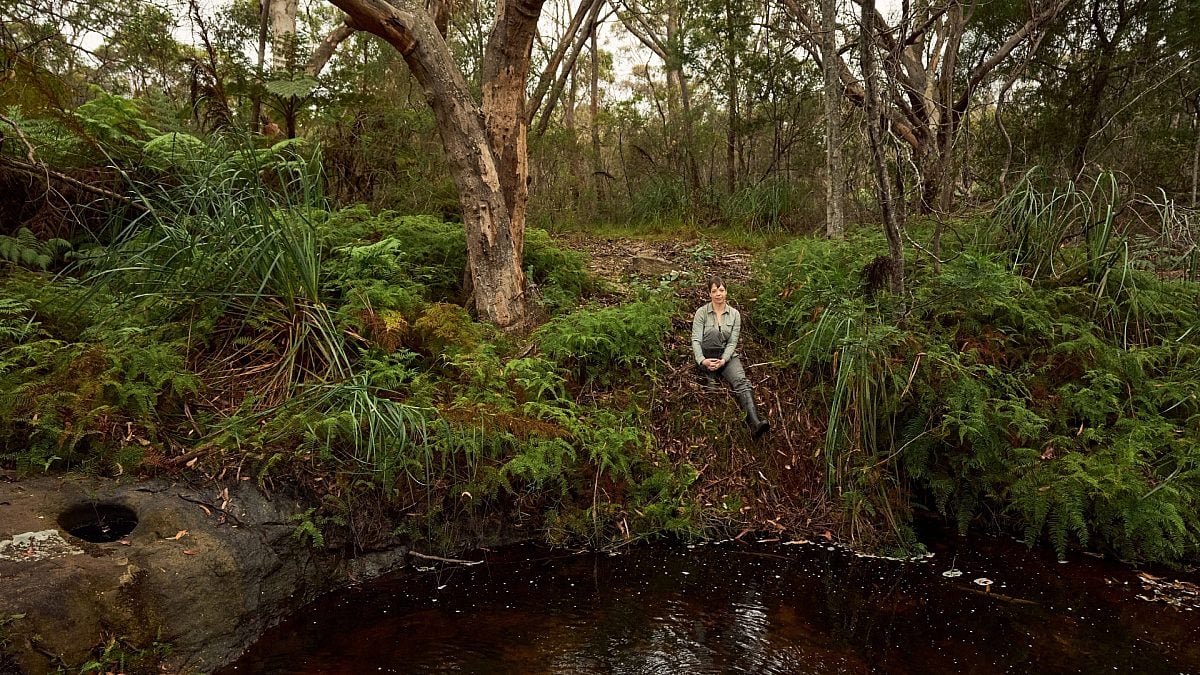
Wilderness Journal #029
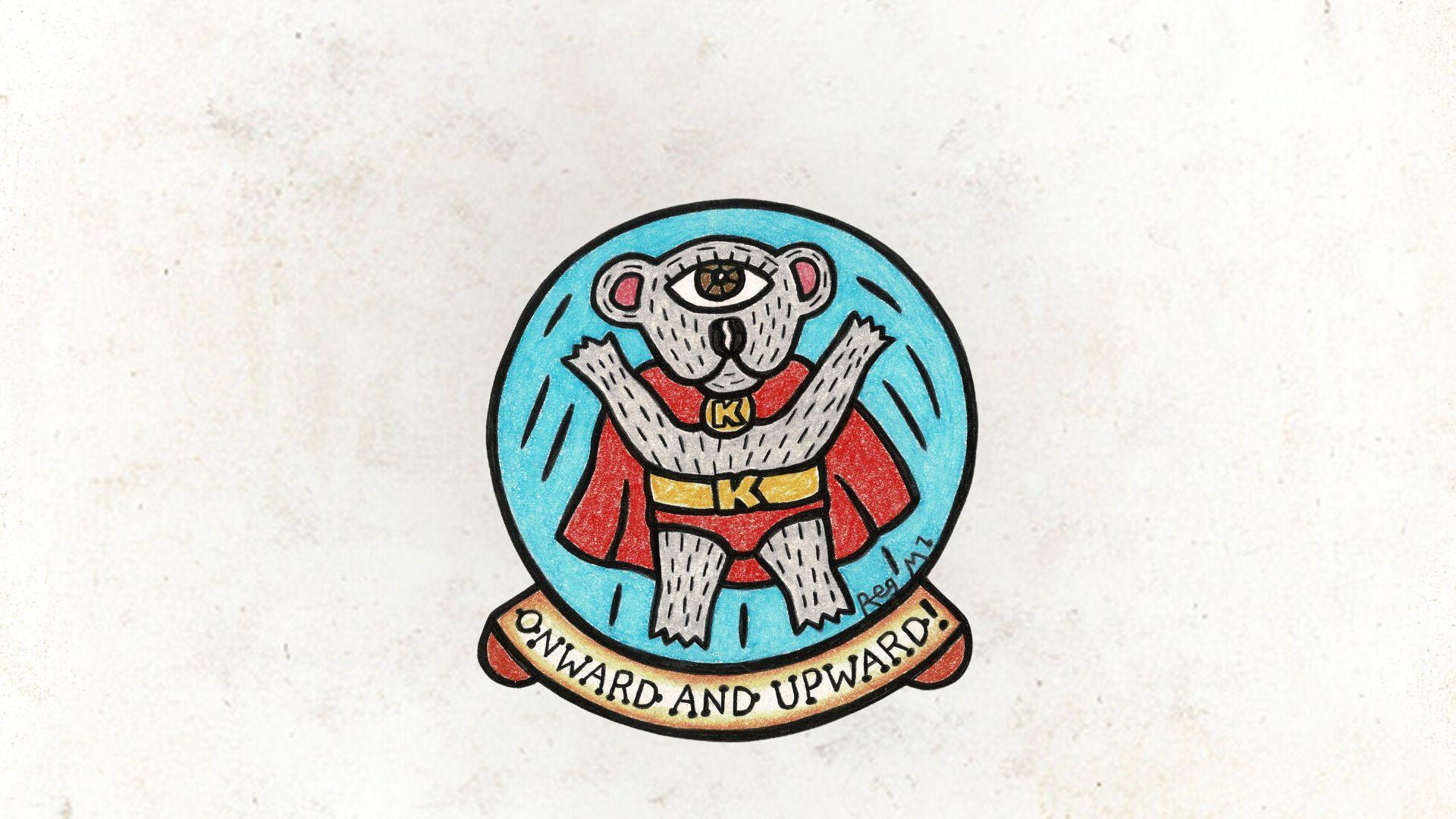
A special issue looking at koalas, the threats they face and the surprising science behind efforts to conserve them.
(Purchase Reg Mombassa's superhero koala design above as a T-shirt—see below)
In the lead up to the 2023 NSW election, NSW Labor reaffirmed its promise to establish the Great Koala National Park. This move could help protect koalas from extinction in NSW, and support hundreds of other species—like the greater glider and glossy black cockatoo—that live in the tall eucalypt forests of the NSW mid-north coast. The Wilderness Society supports a proposal for the park that would link 140,000 hectares of existing national parks with around 170,000 hectares of state forest. Polling shows widespread community support for native forests to be protected, yet the NSW government allows logging to continue in bushfire-affected forests across the east coast of NSW, including, shockingly, in areas of prime koala habitat within the proposed boundary of the new national park.
We spoke to concerned members of the local community about the urgent need to end logging operations and create the Great Koala National Park, before it's too late for koalas.
Photographs of the forests of northern NSW and proposed Great Koala National Park by Krystle Wright
“Ngiambandi wajaarrbin yarrang jaagi gurraygu (Our homelands are sacred to everyone).
"They’re turning these forests into deserts.

“The dunggiirr (koala) is one of the widjir (totems) of my skin group. We are born with our totem. They get handed down through generations and generations and generations. And they tell us who we belong to and who we are related to. Knowing that the koala is on the brink of extinction now, it’s like killing my family. It’s a part of me. That’s our totem and our skin. We were to look after these creatures and make them strong. It’s like caring for your children, your family. It’s your kin.
“Because the koala is my totem, I’m forbidden to kill or hunt the koala. My family and people who belong to the koala are obligated to take care of it."
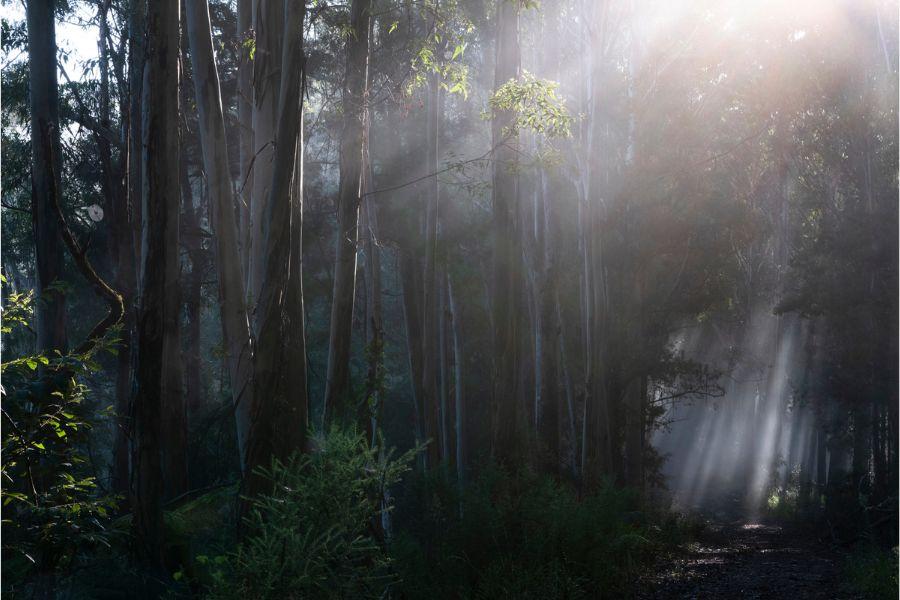
“There is extensive industrial logging occurring within the proposed boundaries of the Great Koala National Park right now.
“At Tuckers Nob and Sheas Nob, which are two of the eight active logging operations currently underway within the Great Koala National Park, there are significant numbers of resident koalas. Koala habitat has been destroyed, harmed and degraded by the Forestry Corporation of New South Wales and the New South Wales Government here in recent days.
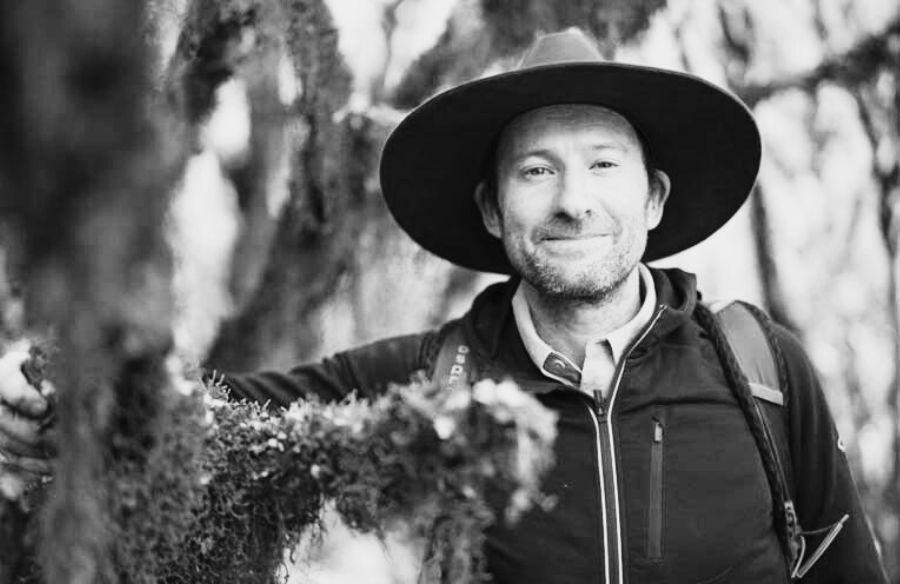
“This is inexcusable. Our government promised to make a national park, to make the Great Koala National Park. However, they actually had no intention of doing so until they took some of the best koala habitat on Earth and industrially logged it.
“That's what we're documenting and that's what communities are railing against, because the government got elected off the back of saying ‘We're going to look after the koalas and we're going to make the Great Koala National Park.’
“I've been doing surveys at Sheas Nob. Most of the grey gum is simply covered in koala scratches. There are lots of signs and evidence of koalas across the active logging areas and probably the most egregious example is where I came across a very old grey gum. Grey gum is a prime koala feed tree and I'd be confident in saying that this particular tree was much greater than 150 years old. It was a big old tree, an old growth tree, and it was chopped down and chopped into pieces and left on the forest floor. On each of those chunks left on the forest floor you can see very clearly koala scratches all over them.
“We need to immediately stop all logging within the proposed Great Koala National Park. Immediately, so that the accelerated trajectory toward extinction of the koalas is stopped, and then we start looking at rehabilitation and revegetation to make up for the impacts and the harms that have occurred in recent times with logging and fire and weeds. The world is watching.
“These forests are spectacular. Every day there are amazing sights and sounds and smells. I see creatures that few people see. I feel a great delight and honour at being able to do so.
“And I want to share these globally significant wonders in our forests with as many people as I possibly can.
“In order to stop the ongoing decline, the destruction of habitat must stop. The science is irrefutable upon that.”
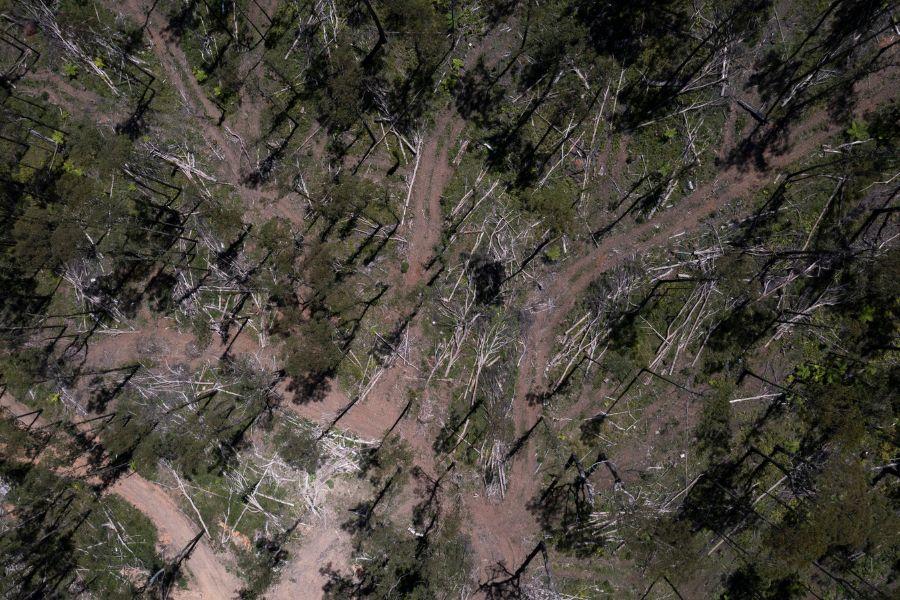
“I grew up in the heartland of what will be the Great Koala National Park. Since finishing school I have worked in tourism all over the world. Ten years ago I moved back to Bellingen realising how incredible the natural area is and have been working in tourism ever since.
“I run the Belfry Guesthouse in Bellingen, a small 9-bedroom guest house sleeping 35 people a night. I would say 60% of our guests come to the area to experience the beauty and nature of the region.
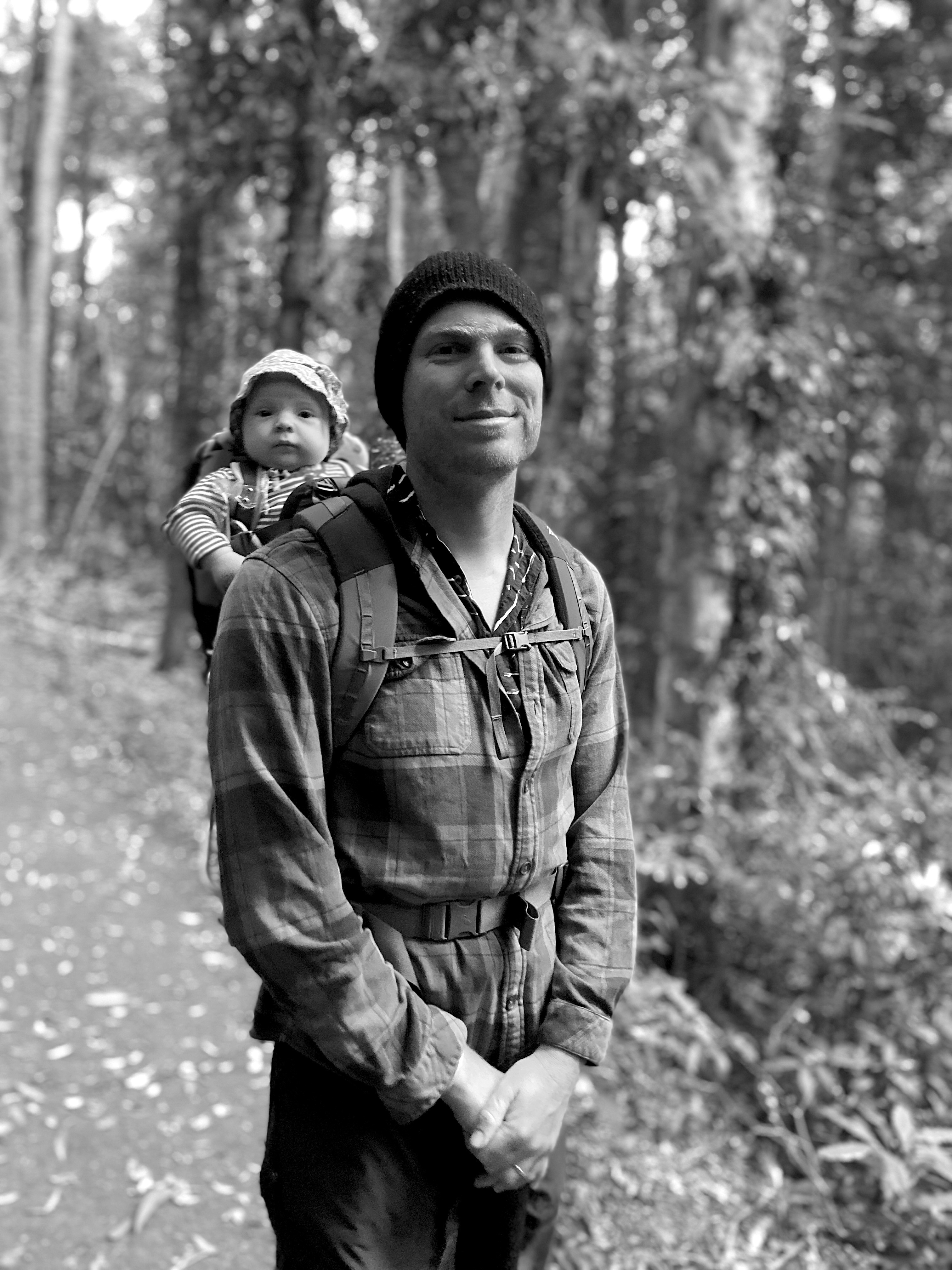
“It’s devastating to have been told the Great Koala National Park would be created, ensuring that tourism continues to flourish in the area, and then only to be surrounded by logging activities.
“My small business directly employs seven people and the guests passing through my guesthouse supporting local businesses. Without doubt the Great Koala National Park will be a massive boost for the local economy and will definitely drive up tourist numbers, there will be lots of new experiences and jobs created from the tourism that would be created.
"Logging in the proposed Great Koala National Park continues to reduce the quality of the natural environment which could be a major drawcard for tourism, not just regionally but internationally.”
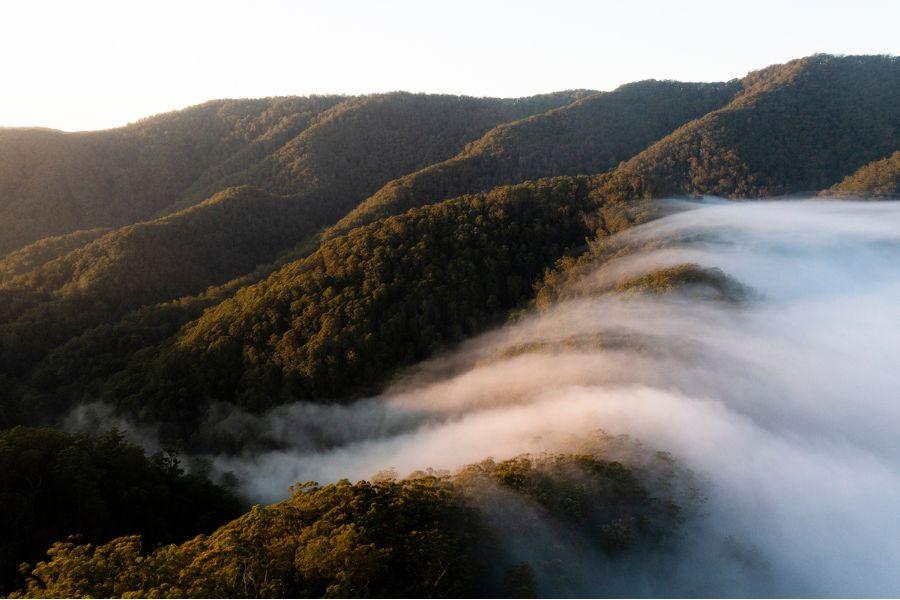
“Koalas are endangered in NSW and a major driver of their decline is deforestation. That’s why protecting koala habitat is absolutely critical to ensuring their survival.
"The NSW government says it’s committed to making sure koala populations in NSW recover, and in fact double. Yet at the same time they are overseeing an intensification of logging in the assessment area of the Great Koala National Park, which they promised to establish as a key measure to protect koalas from extinction.
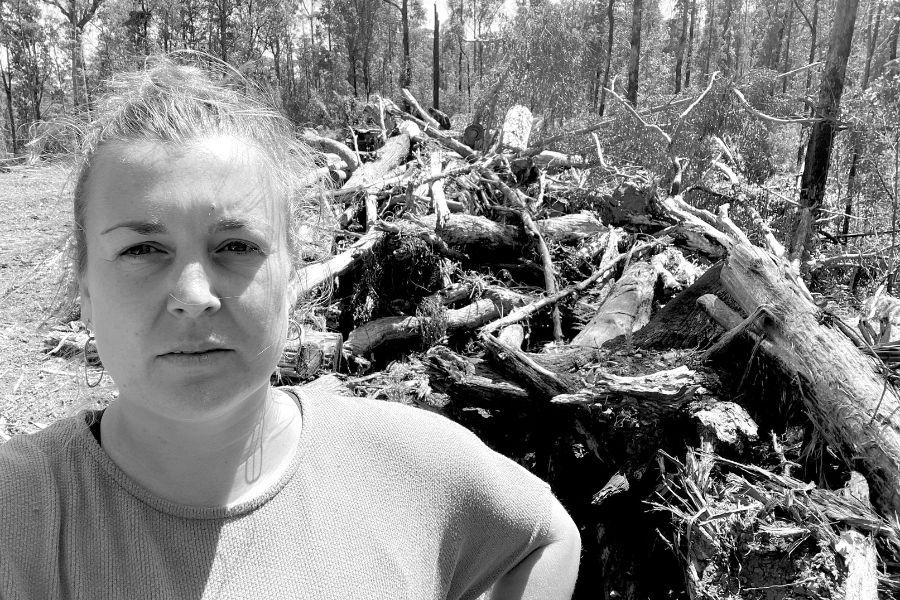
"The reality is that koalas cannot afford any further loss of forest cover within the proposed bounds of the Great Koala National Park. Yet logging is actually getting worse on the Labor government’s watch, because they’re letting the state-owned logging agency rush to log these special forests before the window to do so closes when the park is created.
"While the government moved to stop logging in so-called ‘koala hubs’ after intense backlash to the continued logging, there are still thousands upon thousands of hectares of high quality habitat outside of these hubs that are subject to logging. I’ve been to some of these forests and seen koala scratch marks and scat with my own eyes. There is no doubt the koalas are there, and the trees they live in and feed on are being chopped down.
"After the catastrophic impacts of the Black Summer Bushfires, it really is time for the NSW government to stop logging high conservation value forests—not only in the Great Koala National Park, but across the state. Studies show that public support for native forest logging is extremely low. Taxpayers should not be forced to cough up millions of dollars to prop up this loss-making industry that makes bushfires more severe and is pushing threatened species closer to extinction."
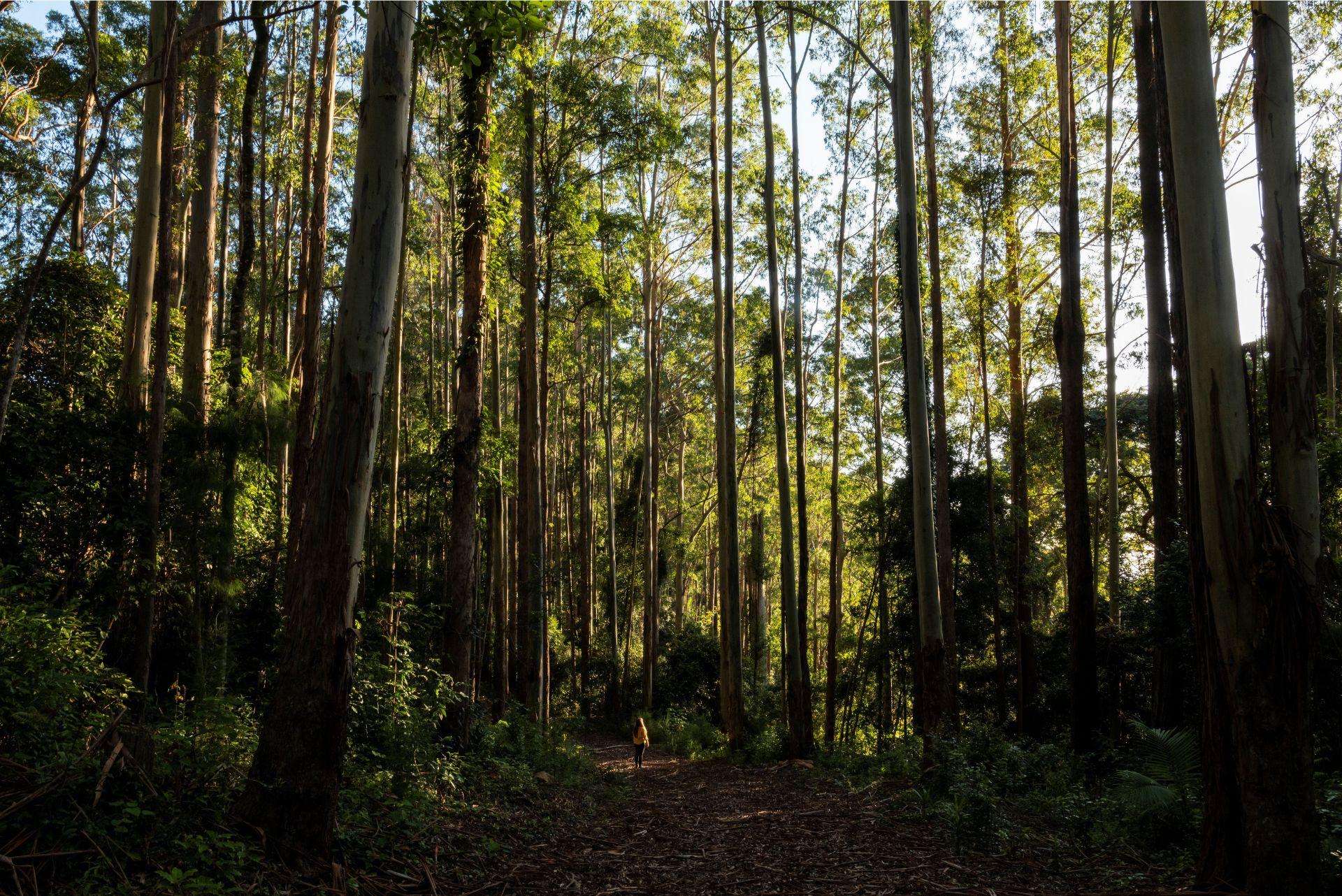
Krystle and her work feature in the new National Geographic documentary Photographer, currently streaming on Disney+ and Hulu.
We asked Reg, 'Why the koala?'
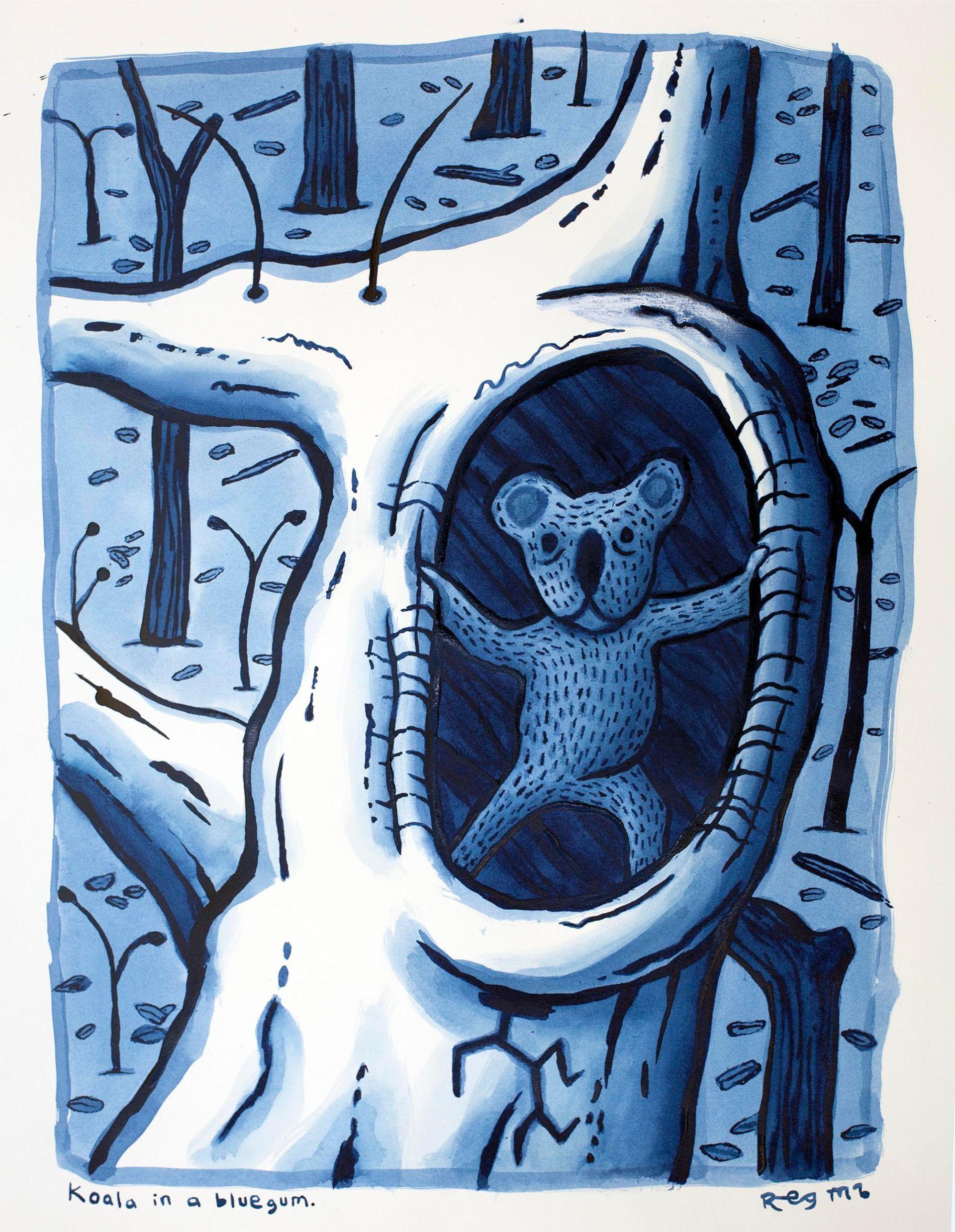
"I frequently use the koala in my pictures to indicate an Australian location, as it is a readily identifiable iconic animal peculiar to this country. The koala is under threat of extinction because of climate change and habitat destruction by logging and land clearing. It is more threatened than its bigger and faster cousin the kangaroo. So, it is appropriate that I use the koala in my eco related pictures.
"Lucky for us koalas are not human!"
"If koalas were a minority species of humans threatened with extinction or relocation they would be fighting for their survival. Lucky for us koalas are not human!
"The onwards and upwards koala was designed to cheer up higher school certificate students at the beginning of the pandemic."—Reg Mombassa
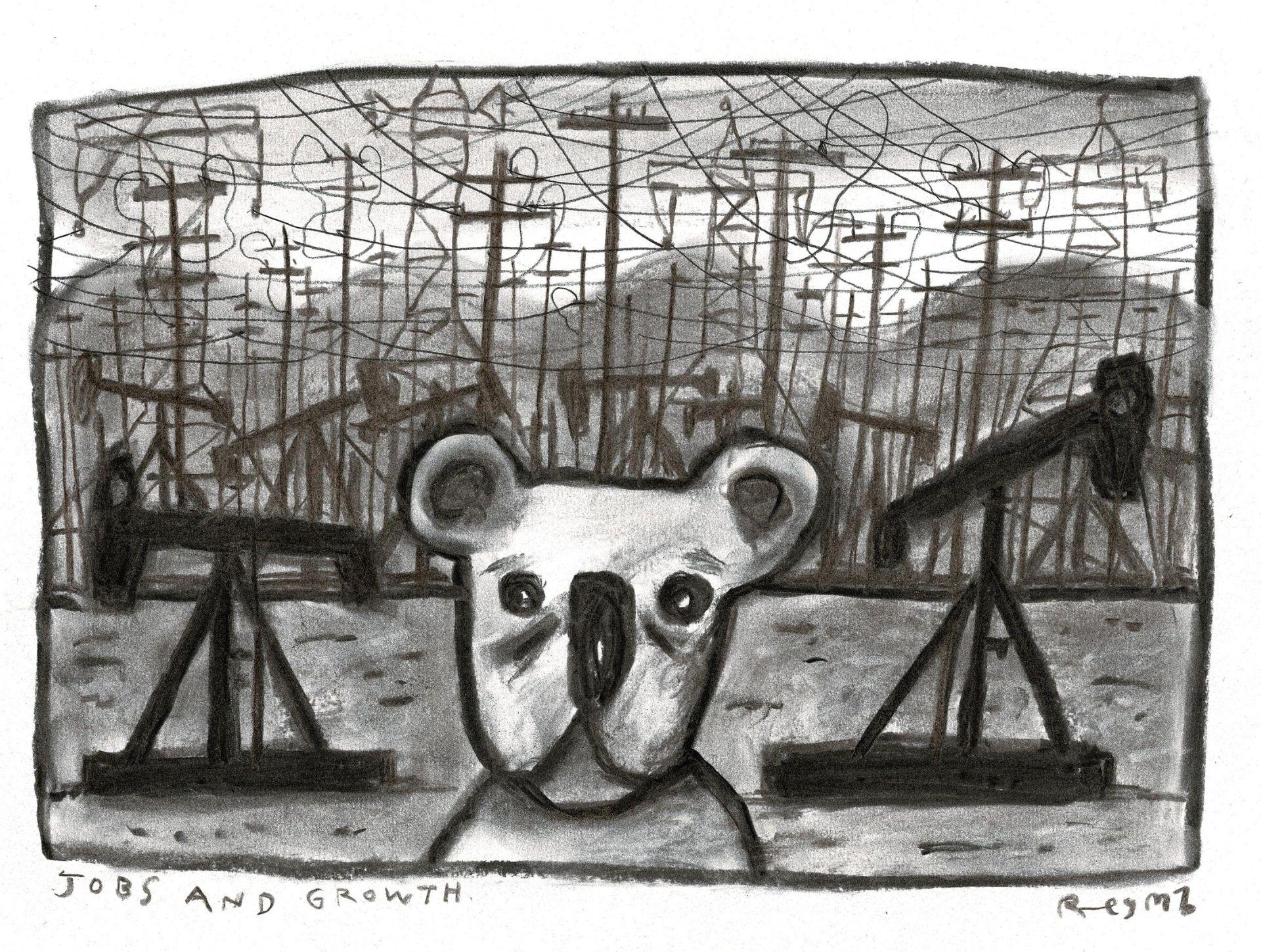
Artist Reg Mombassa shared this koala design with Wilderness Society for a special new T-shirt.
We thank Reg for his beautiful work and his ongoing generosity and dedication to the protection of the natural world. Purchasing this tee helps support the Wilderness Society.
(Adult and kid sizes available)
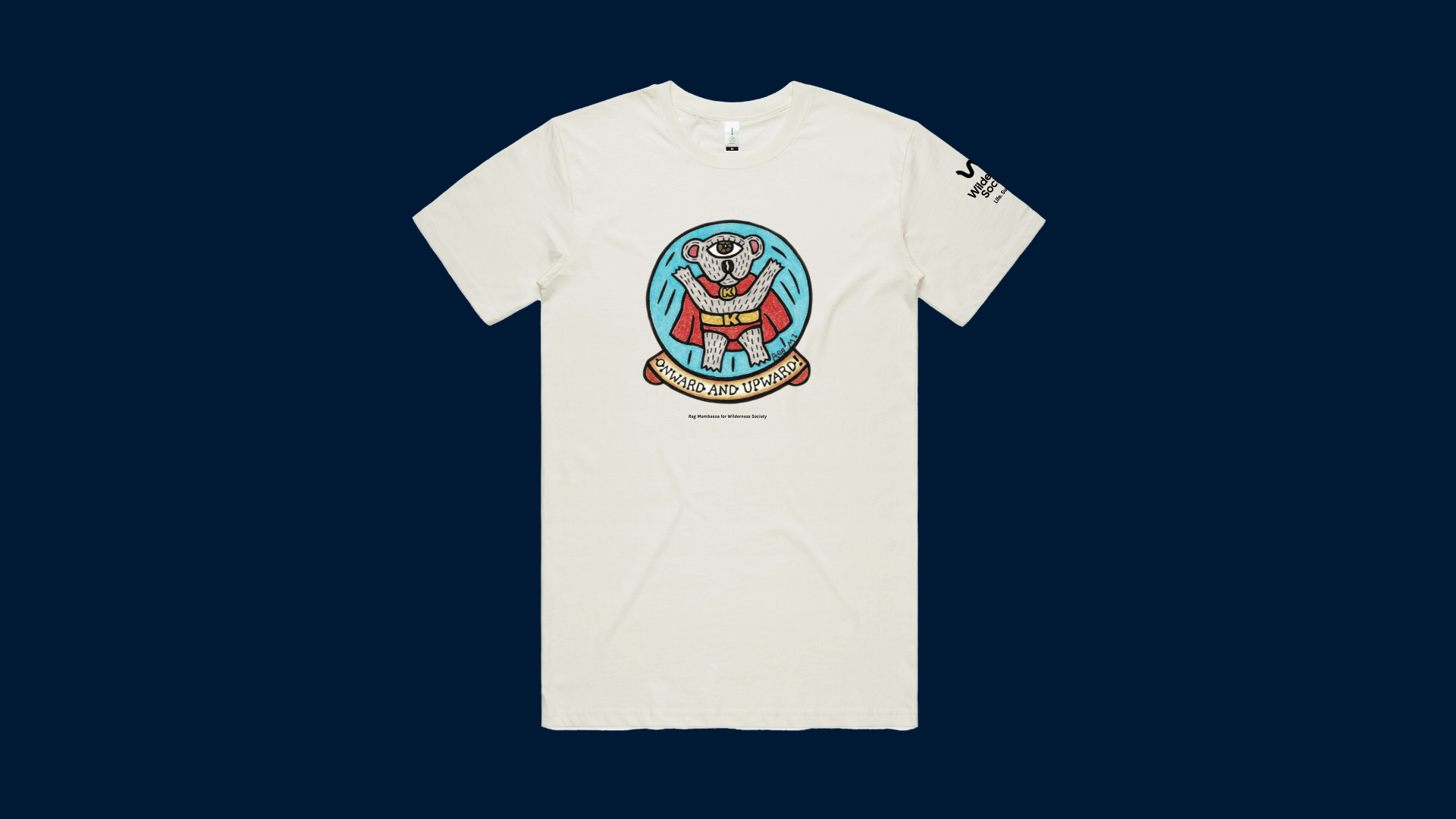
We spoke with Dr Kellie Leigh, the CEO of Science for Wildlife on the important research her team has been conducting into koala populations and the habitats they use.
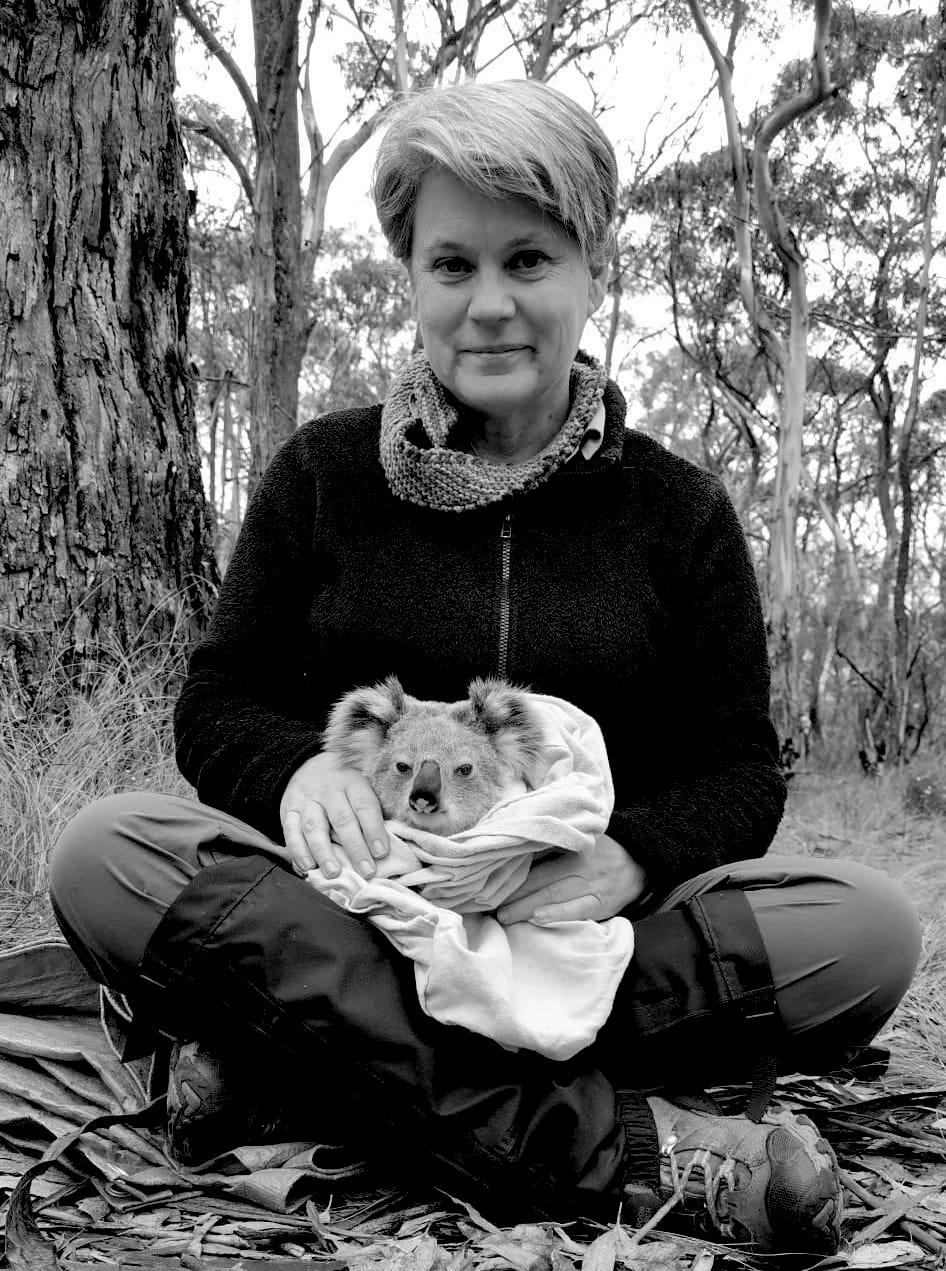
What is it about koalas that fascinates you?
I never had a dream of becoming a koala researcher. I first became involved because there were some very clear gaps in koala conservation. When I chat with colleagues about what needs to happen for koala conservation to be properly informed and effective, we're often surprised and think: 'hasn’t anyone done that yet?'. Coming back from a decade of work in Africa, I didn’t expect to be working with such an iconic species, I figured koalas must have been well studied and well looked after. The fact they haven’t has been my biggest motivator. It’s a bit embarrassing as an Australian too.
Koalas are also what is known as an umbrella species; they rely on a huge diversity of eucalypt forests for their survival and if we protect those forests that benefits a range of other species. So while koala conservation is a single species project, it gives us some extra bang for the conservation buck and that was a strategic choice behind starting to work with them.
Tell us about your recent expedition—what were you doing and where?
We’re expanding our work documenting koala populations in and around the Greater Blue Mountains World Heritage Area. We’ve been receiving sighting reports of koalas for some years from around the Lue area, and we are excited to have finally landed some funding (a Commonwealth Saving Koala Fund grant) to start surveys up that way. Our team, including koala detection dog and friendly ambassador Groot, headed up that way to Rylstone and Mudgee, to meet with community members, the local Landcare group, Traditional Owners, and also staff from the local National Parks and Wildlife Service and Council, to get an idea of what’s going on.
There have been an increasing number of koala records, and we were delighted that everyone is really supportive of our plans to get a better handle on the size and distribution of the koala population and document their preferred habitats.
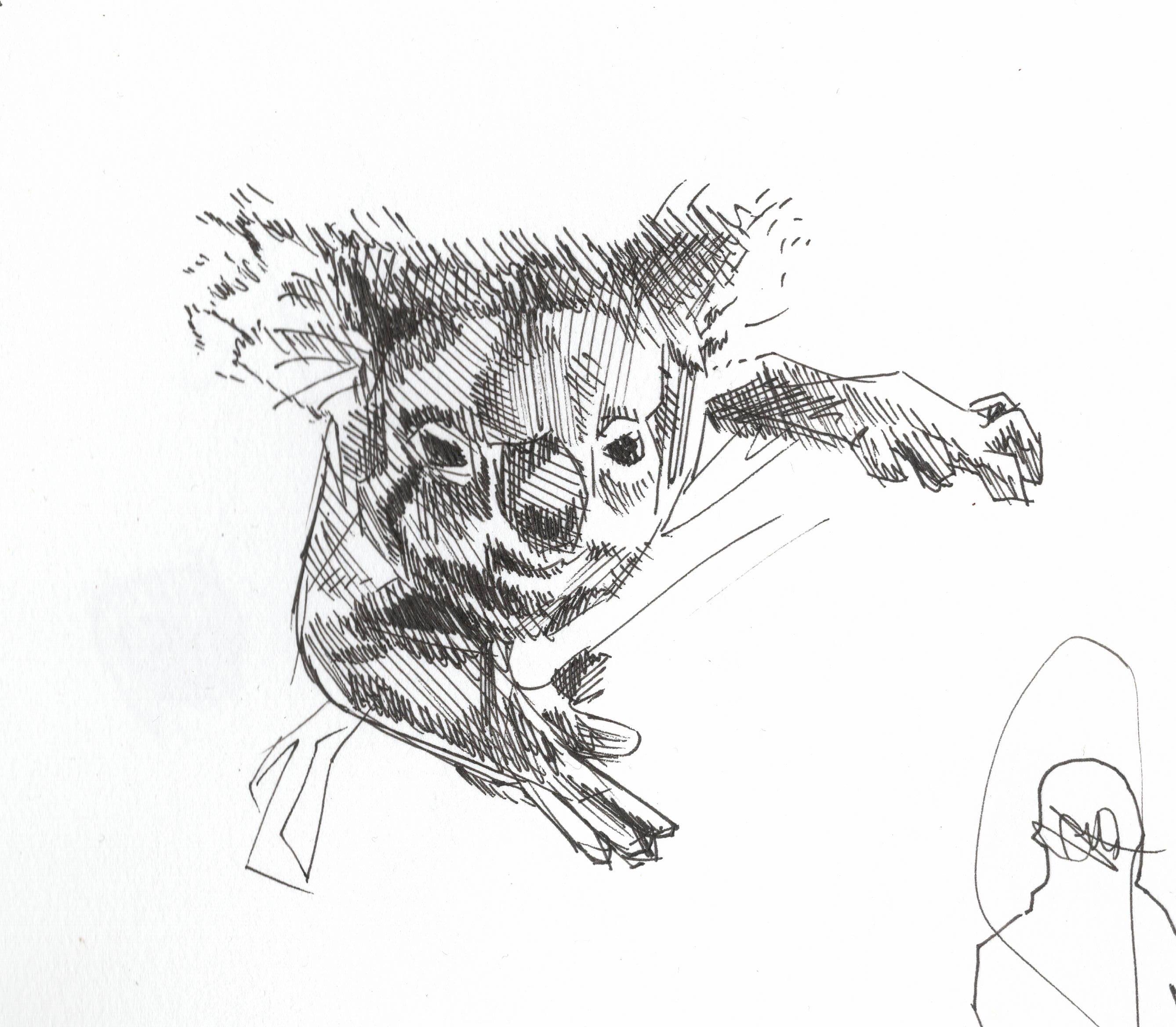
What can you tell us about some exciting recent discoveries of new populations and growing populations too?
It's true there is a very good news story to be told. The overall picture for koalas is not good, with general decline across their range in NSW, QLD and the ACT and their uplisting as an endangered species in these states, so there is a lot to be concerned about. However, where we have growing koala populations it is important to learn from that, and to make sure these areas of hope are a high priority for conservation management.
That’s the story of the koalas we have been documenting in and around the Greater Blue Mountains World Heritage Area (GBMWHA), over the last 10 years. We’re finding koalas spread over a large area, using tree species and habitats we didn’t know they could utilise, on relatively poor soil types. They have high genetic diversity which is important to conserve, and we’re also finding chlamydia-free populations on the western side of the Great Dividing Range. We’re learning so much from them, and they’re doing such interesting things, we call them the “rule breaking” koalas.
The discovery last year of a healthy population of koalas living in Coolah Tops National Park in Central West NSW was more really good news. It wasn’t completely surprising because one thing we have found is that if you don’t look, you don’t find. Koalas can be very cryptic in some areas, particularly where the trees are tall and/or terrain is rugged and remote, and the fact they are not seen very much doesn’t mean they are not there. It’s encouraging that more survey effort is happening now, to uncover more koala populations.
Do the new and growing populations give you hope for the future of koalas?
Yes, absolutely. In recent decades conservation efforts have focused on areas with good soil types and high densities of koalas, especially close to the coast. But when you think back to the fur trade days in the late 1800s and early 1900s, when millions of koalas were shot, those sorts of numbers indicate koalas were widespread. It makes sense that they are more generalist than recent science suggests. There were historical records of people hunting koalas on the western and eastern edges of the GBMWHA back in those days.
So the good news is that, as we’ve been discovering, there are many more habitat types that can support koalas than everyone thought, so there’s more potential koala habitat for them to expand into and to protect. Prior to our work, nobody thought the primarily sandstone country of the GBMWHA could support decent numbers of koalas. But our work to date has uncovered not just hundreds, but thousands of koalas.
That doesn’t mean that koalas are not in real trouble in many other places, where removal of habitats is having a massive impact along with other threats. The koalas we’re working with are also at risk from disease, fire and climate change. So there is a lot to do to ensure their future, but these stories of hope are really motivating.
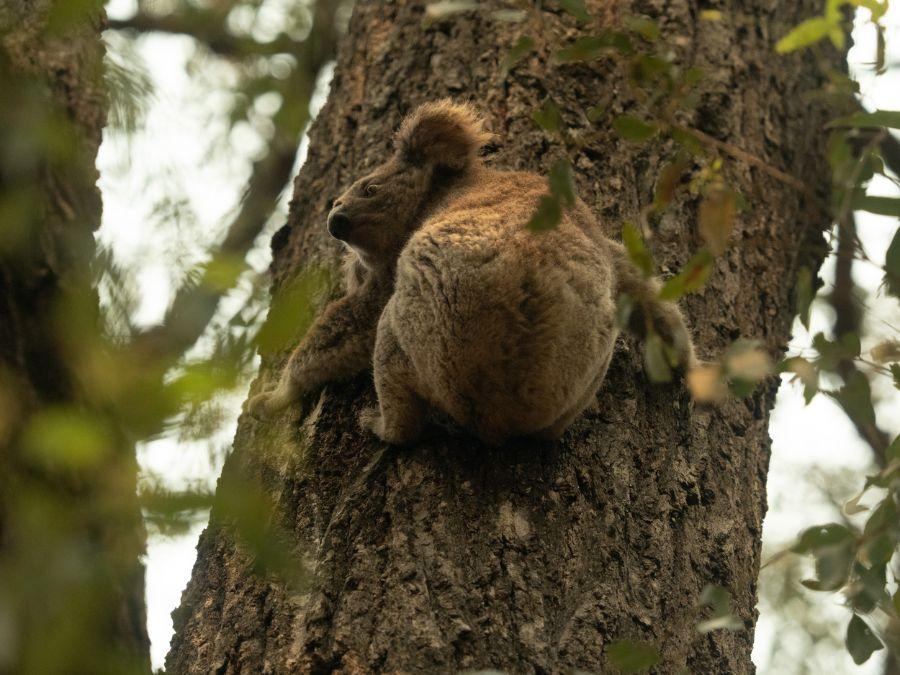
Climate change is a massive threat to koalas, how can the Blue Mountains koala populations you work with help to mitigate the threat of climate change for koalas?
That is also a question we are trying to answer. There are indications that the GBMWHA may be a climate refuge for koalas and other species. It has a wide range of habitats and microclimates and while, for example, the general weather pattern might be very hot and dry, there are likely to be areas in the mountains that are cooler and wetter. We need to know if koalas use these. So, we have a study underway with temperature monitors out in the landscape, and on koalas, and we’re looking to see how koalas use the landscape under different weather conditions. For example, do they move into gullies in hot weather, or do they just move into a denser canopy shade tree up on the ridge?
Obtaining this information will also help us to future-proof habitat restoration efforts beyond our study sites.
Why is it important to have large, intact habitat for koalas like that in the Blue Mountains and the proposed Great Koala National Park in Northern NSW?
Conserving habitats with appropriate scale and connectivity is critical for all species. There is a phenomenon called the 'edge effect' that has a big impact. For example, if you have a population of koalas living in a small national park or reserve, some of them are going to move into surrounding areas where they encounter more threats, such as vehicle strike and dog attacks.
Habitat fragmentation means they are likely to have to move greater distances to find good food trees. Koalas have a low-energy diet of eucalypt leaves, they sleep up to 20 hours per day, which is when their bodies are using a lot of energy to digest food that is toxic to most other animals. Having to move further to find food can impact their health; from making them more susceptible to disease, to potentially causing starvation if they can’t find enough decent food. It’s the human equivalent of having to run a marathon to get a meal. You can’t do that everyday and survive, you’re burning more energy than you’re consuming.
This all results in higher mortality rates in these edge areas outside of the reserves. It can drain the overall numbers of a koala population; in ecological terms it is known as a sink. Effective conservation requires a protected area that is big enough to sustain a whole population of koalas within it. Given how endangered koalas are we need to enable population growth, not just maintain numbers, which means the areas and their connectivity need to be even larger. That’s why the GBMWHA and other large protected areas are so vital.
Find out more about the work of Science for Wildlife.
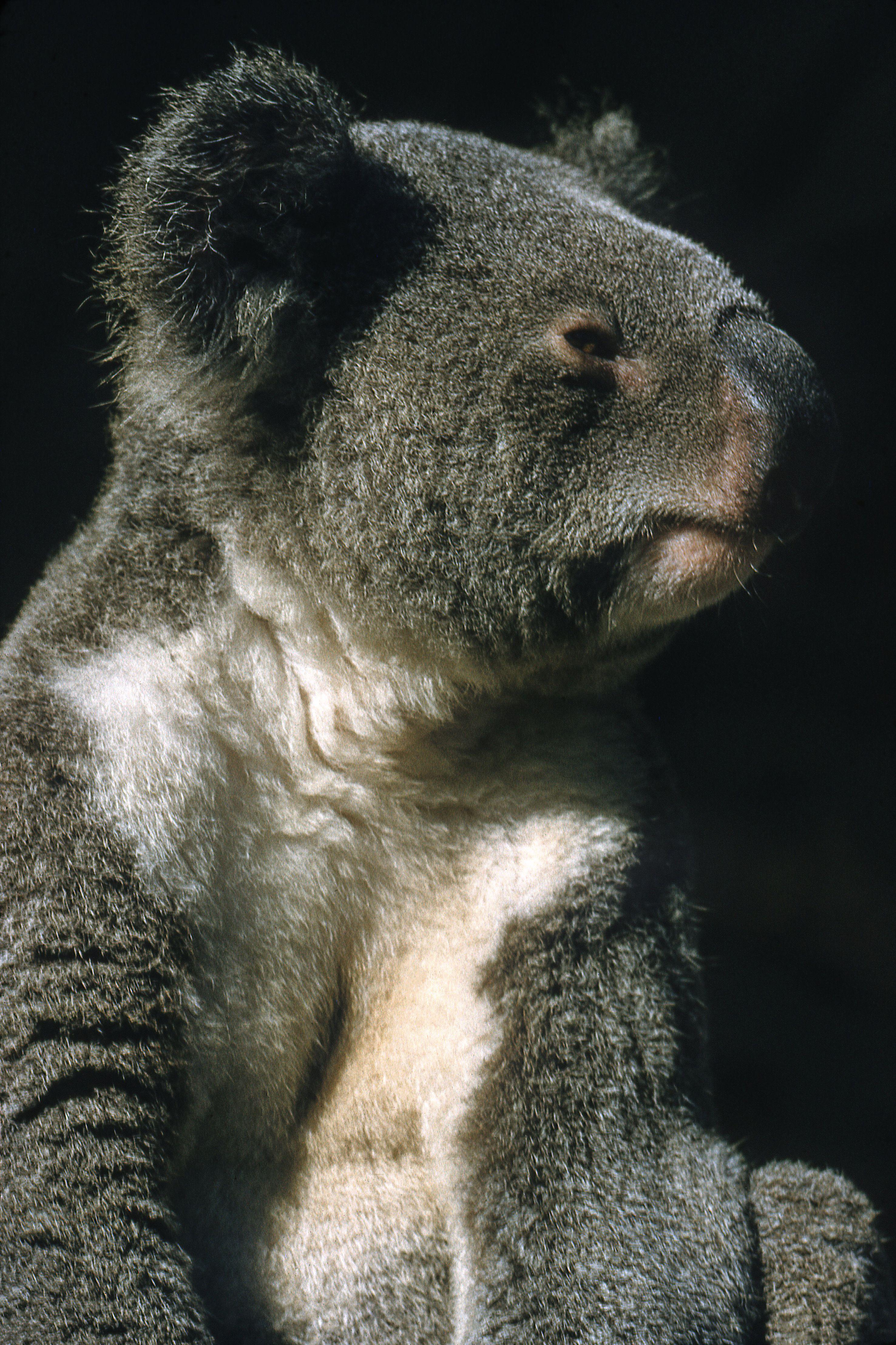
One Australian legend photographs another. We thank the David Moore estate for this photograph.
© Lisa, Michael, Matthew and Joshua Moore, image courtesy davidmoorephotography.com.au
We've covered the famous koala suits in Wilderness Journal several times, but really why not? They're legendary. So you'll forgive us in this special koala issue for bringing you the true origin story of the koala suits, from an article in the August/September issue of Wilderness News, 1994. (This is the last time, we promise.)
Plus, take a look back at issue #008 of Wilderness Journal for tales from past wearers of the suit.
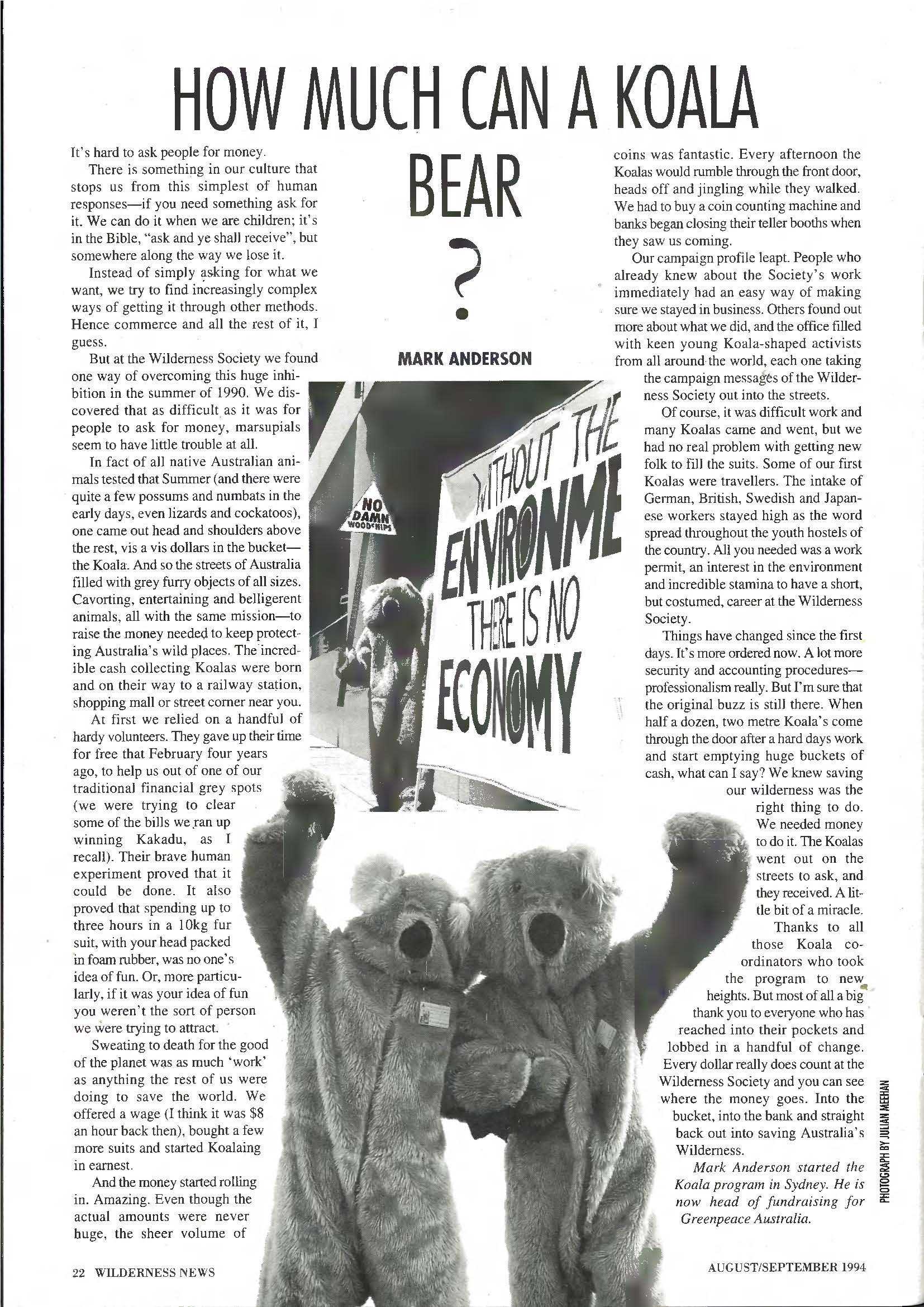
We recognise First Nations as the custodians of land and water across the continent of Australia and pay our respects to Elders past and present. We acknowledge sovereignty was never ceded.